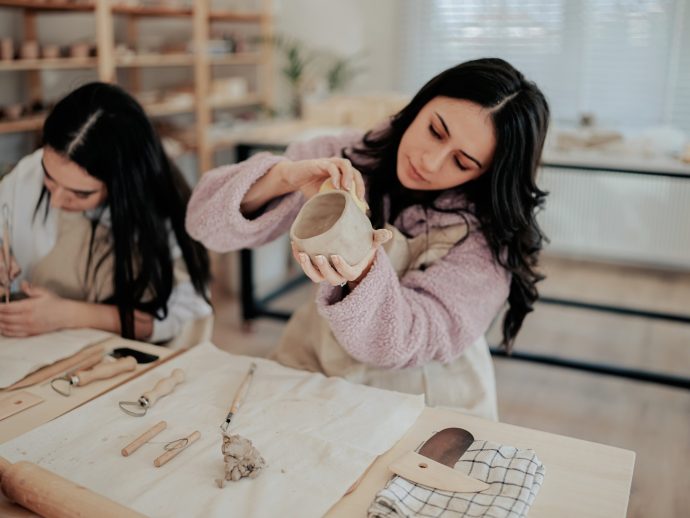How multimodal enrichment works
How do we learn best? New scientific evidence suggests that learning that incorporates the use of multiple senses and movement—known as multimodal enrichment—may be the way of the future when it comes to teaching and learning for all ages.
Coming back to our senses
Multimodal enrichment (a.k.a. multisensory learning) transforms the traditional classroom into a more natural setting, using all of the sights, sounds, odors, tastes, and proprioceptive information that comes with it. It may engage some—or all—of our senses at once.
There are five different sensory “modes” known to kick learning into hyperdrive: linguistic, visual, audio, gestural, and spatial.
Utilizing one or all of these modes can help enhance learning in multiple skill areas, including letter and vocabulary acquisition, reading, mathematics, music, and spatial navigation.
Sense-based learning in the classroom—and beyond
Educational therapist Dr. Bibi Pirayesh knows first-hand that using your senses is essential to learning for kids with learning disabilities.
“You experience life through all of your senses,” says Pirayesh. “From a young age, it’s important that kids are engaging their senses and their entire bodies in their learning.”
Adults can benefit, too
Director, speaker, and clinical psychologist Dr. Brianna Gaynor says they begin with the understanding that everyone learns differently.
They help employees identify and then apply the learning style that works best for them. Then, they enable employees to learn in a way suited to them, which means they provide manuals with visuals and meetings for auditory learners, but they also understand that those who learn by doing may have to be shown how to complete a task.
Multimodal enrichment in practice
There are myriad ways to apply the magic of multimodal learning. Here are some examples.
- Physical movement can be integrated into learning in multiple ways. For instance, Pirayesh has learners move before sessions to engage the brain: she may have students draw or walk the infinity sign or move across the midline of their bodies by, for example, bringing up their left knee and touching it with their right hand and vice versa.
- Think-pair-share is an active learning strategy first introduced by Professor Frank Lyman in 1981. Students are given time to think or jot their thoughts down. Then, they’re paired with one other student or a small group to discuss what they just thought about. Lastly, some students are selected to share what they discussed in their pairs or groups.
- Case-based learning refers to the use of real-life examples when introducing or going through a concept in class. The instructor’s role is to facilitate a discussion where the students analyze and problem-solve as a group.
Supplements to consider
These supplements may help support learning, according to scientific research. Remember to chat with your health care practitioner before trying a new supplement.
- L-theanine
- Green tea/matcha
- Omega-3
- Curcumin
By Carimé Lane

